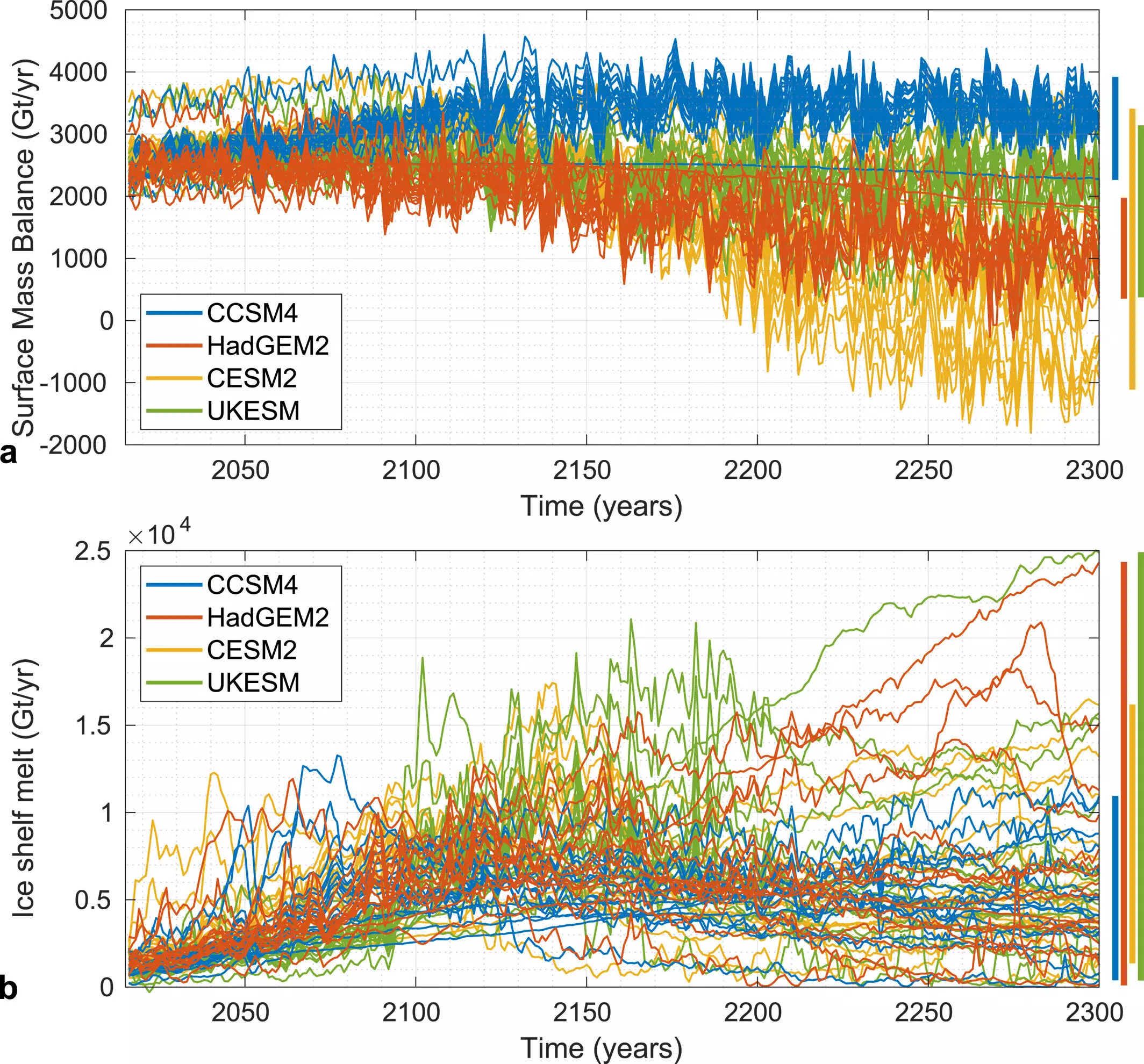As the climate crisis continues to escalate, a groundbreaking study led by a team of over 50 climate scientists from Dartmouth and various global research institutions sheds light on the uncertain fate of Antarctica’s ice sheet. This pioneering research, published in the journal *Earth’s Future*, presents the first significant projections of how carbon emissions may influence ice loss in this critical region over the next 300 years. Understanding these projections is essential, as they not only affect Antarctica but also have serious implications for global sea levels and, by extension, humanity as a whole.
Antarctica’s Ice Sheet: Current Predictions and Beyond
The study analyzed data from 16 distinct ice-sheet models, revealing a consensus that ice loss from Antarctica will likely increase throughout the 21st century. However, the projections reveal a stark shift in certainty after the year 2100. While initial forecasts suggest gradual melting, the situation becomes alarming post-2100, with models indicating rapid retreats across most of Antarctica’s western basins. Researchers caution that without mitigating current carbon emissions, global sea levels could rise significantly—by as much as 5.5 feet by the year 2200.
The findings highlight a growing concern that policymakers often neglect long-term projections, focusing primarily on the short-term scenarios that stretch only up to the turn of the next century. Hélène Seroussi, the lead author of the study and an associate professor at Dartmouth, stresses that this research fills an important gap in understanding the long-term consequences of our current emissions trajectory.
Emissions Scenarios and Their Implications
The study employed two main scenarios to assess the fate of Antarctica’s ice sheet: high-emission and low-emission pathways through to the year 2300. The alarming observation made by co-author Mathieu Morlighem is the stark increase in potential ice loss under high-emission scenarios compared to their low-emission counterparts, particularly after 2100. This serves as a compelling reminder that immediate action to reduce carbon emissions is imperative if we hope to mitigate future sea-level rise.
The distinction in outcomes that emerge from the various models underscores a crucial point: while the current levels of carbon emissions may seem manageable, their long-term consequences could prove catastrophic. The team’s modeling also reveals considerable variability in how quickly different scenarios may lead to ice retreat, yet a consensus emerges that once significant ice loss begins, it becomes virtually unstoppable.
One of the notable conclusions drawn by the researchers is the potential for a near-total collapse of the Antarctic ice sheet by 2300 under persistent high-carbon emission scenarios. This dire projection raises especially significant concerns for coastal cities worldwide, where millions of people are at risk from flooding driven by rising sea levels. As Antarctica’s glaciers retreat and contribute to ocean volume, the ripple effects could be felt globally, prompting urgent discussions about climate adaptation and resilience strategies.
The research also encourages a more focused approach to understanding and addressing the modeling uncertainties present in ice projections. Researchers believe that the results could lead to future collaboration efforts to refine modeling techniques, especially concerning the Greenland ice sheet and other regions vulnerable to climate change.
In light of these findings, urgent calls for action resonate throughout the scientific community. The need for significant reductions in greenhouse gas emissions has never been more pressing, as the models indicate that our choices today will have far-reaching consequences for future generations. According to Seroussi, the time to act is now—not just to avert immediate environmental disaster but to safeguard the stability of our planet for centuries to come.
The Dartmouth-led study is an eye-opening reminder of the interconnectedness of climate change, carbon emissions, and the fragile state of Earth’s ice sheets. To chart a sustainable path forward, it’s imperative that both policymakers and the public recognize the critical importance of long-term forecasting and act decisively to protect our climate and, ultimately, our future.


Leave a Reply